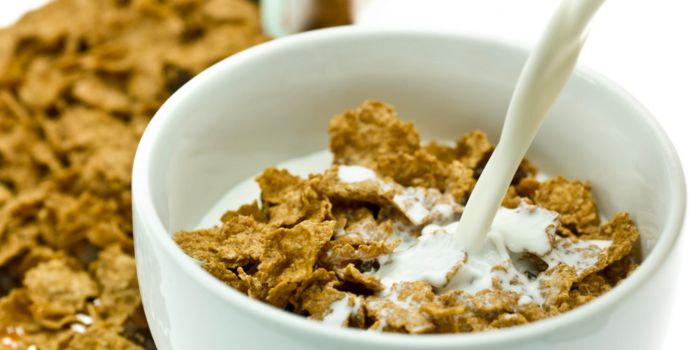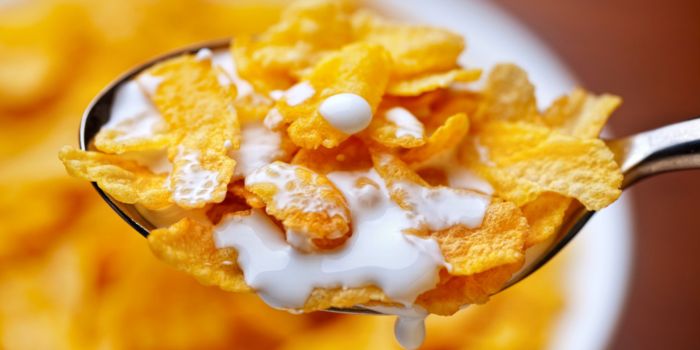The Surprising Truth About What You Eat for Breakfast
If you were like any other living and breathing human kid, you also were crying in the cereal aisle to get your parents to buy you the most colorful, sugar-loaded breakfast cereal in the market.
And if you weren’t, well you are lying.
Now as an adult, your favorite cereal type might have changed but, in this fast-paced world, where time is a luxury and convenience ranks supreme, cereal has long been crowned as the quintessential breakfast option.
The simplicity of the breakfast, ease of preparation, and wide array of flavors have made it a staple in households across the globe.
But amidst the convenience, the question lingers: Is cereal truly the champion of breakfast choices, or is it merely the challenger in a world of evolving tastes and nutritional insights?
In this blog, join us on a journey where we unravel the layers of the cereal conundrum, exploring its nutritional value, its impact on our health, and the broader implications it holds for our breakfast habits.
We'll examine its evolution from a humble beginning to our day to a symbol of modern convenience, while also considering the potential pitfalls hidden behind its colorful packaging.
Also Read: How to Lose Weight in 8 Weeks?
How do ordinary grains become the breakfast delights?
FROM GRAIN TO SPOON: A bowl of cereal provides the convenience of “pour and go” for your busy mornings, so you might not have wondered how it’s made!
Whether it is a sugar-free cereal or a loaded one, it all starts with harvested grains like corn, oats, rice, and wheat.
The grains are then transported to factories, where the transformation begins. They are cleaned, husked, and hulled where the outer covering falls off.
They are then milled and mixed with sugar, salt, and different additives to give them flavors, and colors. They are sometimes fortified with Vitamins and Iron depending on the type.
Wheat and Oats are generally made into flour first, whereas corn and rice get crushed or flaked.
For some cereals, shaping is the selling point. The dough is squeezed through intricate molds, forming loops, squares, or puffs.
Now, Hot cereals like traditional Oatmeal need to be cooked at home, but cold cereals come pre-cooked, which reduces the amount of at-home cooking to a minimum. Depending on the type, the mixture might be steamed, baked, or toasted, to bring out a golden color and delightful aroma.
Some cereals might even get an additional step to add to the charm and flourish; it might be a coating of chocolate, a dusting of sugar, or even a coating of honey.
They are then packaged and shipped to be consumed by the world.
Also Read: 23 Low Sodium Snacks to add to Your Weight Loss Diet
IS CEREAL THE HERO OR THE VILLAIN OF THE BREAKFAST STORY?
Although we continue to eat cereal in and around the world, families should take a careful look at the packages' nutrition labels before putting them on the table. And it isn't just the cereals, we should put a well-thought-out consideration into all processed food when it comes to taking care of our health.
So is cereal good? The answer is a bit longer than the preferred YES or NO.
YES, Cereal can be healthy…
But not the ones that are glorified desserts in breakfast form. No, we are talking about the fiber-rich, less sugary, and more nutrient-rich type.
Also Read: Low Calorie Side Dishes to Enhance Your Fitness Journey
Nutrition Profile
Whole grain cereals are often more fiber-rich than their counterparts, and they deliver a load of vitamins and minerals directly into your morning diet to provide you with a nutrient-rich start to your day. Unlike processed and sugar-loaded cereals which will give a false sugar-rushed start and a very short satiety for the day.
People who struggle to meet their iron and fiber needs should definitely try the whole grain cereals in the market to add a diverse breakfast rotation item to their daily breakfast routine.
The milk or yogurt you pair with your cereal can add a boost of protein too. You can further add fruits and nuts to the mix to make it more hearty and healthy.
The Right Portion
A bowl of cereal, as we have discussed, can be a healthy start to your day but it is imperative to note that it has to be in the proper amount.
Nestle says that the right portion for you depends on the energy needs of your day, depending on varying energy needs.
Using a food scale to measure the weight of different cereals is also a good idea, because one portion of different cereals will look different because of varying shapes, volume, and density.
But, Beware of the sugarcoated deception.
Also Read: Do You Gain Weight on Your Period
First things first...
Sugar
Glance at the nutrition label of your favorite cereal. Is sugar listed among the top three ingredients? If so, be wary.
This is one of the reasons we suggest taking a good look at the food labels on the packages of your processed food because there is hidden sugar and sodium loaded into these foods.
Many cereals boast high sugar content, often exceeding recommended daily limits for adults and children alike.
These added sugars not only contribute to cavities and weight gain but also spike blood sugar levels, leading to energy crashes and cravings later in the morning.
Also Read: Electrolyte Water - Benefits & Myths
Processing, the Nutrient Killer
The processing of these cereals strips away valuable nutrients like fiber and healthy fats, leaving behind a nearly empty-calorie product.
Think frosted or chocolatey kinds of cereal – highly processed grains sometimes lacking and sometimes completely devoid of fiber, the key to feeling full and satisfied. This lack of fiber also hinders digestion.
Also Read: How to Make Your Water Taste Better?
Additives
Cereal companies are masters of manipulation. Cartoon mascots, vibrant packaging, and health claims ("fortified with vitamins!") lure us into a false sense of security.
Don't fall for the facade! Brightly colored cereals often achieve their hues through artificial dyes, and "fortified" doesn't always translate to being truly healthy.
Read Now: Healthy Salad Recipes for Weight Loss
Tips to make a healthier breakfast bowl!
1. Choose a Nutrient Dense Cereal
A cereal that packs equal to, or more than 5 grams of fiber per serving. It will also keep you full for longer.
High-fiber varieties are easier to digest and stimulate regular bowel movements. So, the whole grain varieties are good to help you meet your dietary fiber recommendations every day.
2. Less Sugar Added Content
The recommended cereals are those that have less than 10 grams of added sugar in them.
Do not just look at the total sugars. Look at the added sugar content too. Because added sugar content includes natural sugars from the ingredients included in the cereal mix, like nuts and dried fruits.
If you still want to eat a high-sugar cereal, maybe think of it as a treat.
3. Add Topings to Pack a Punch
Add a fruit, like, a banana, or a bunch of strawberries as toppings to your cereal to provide more fiber, anti-oxidants, and more flavor.
Fruits add a natural sweetness to the cereal too.
Also Read: 5 Best Vegetables to Spiralize
Which One Stands Out?
Not all cereals are created equal, and some hide a surprising amount of sugar and unhealthy fats behind their colorful facades.
To help you navigate the breakfast aisle like a pro, here's a quick guide to the good, the bad, and the monsters (According to the British Heart Foundation):
Champions
- Porridge: The undisputed king, packed with fiber and beta-glucan. Go unsweetened and add your own sweetness with fruit for a guilt-free win.
- No added sugar/salt muesli: A mix of grains, fruits, and nuts (minus the sugar overload), offering fiber and delicious variety. Just skip the tropical versions with sweetened dried fruit.
- Shredded whole wheat cereal: Plain and simple, but high in fiber and low in nasties. Add fresh fruit for a flavor boost without the sugar spike.
Also Read: Your Ultimate Guide to Intermittent Fasting
Good choices, but watch out
- Bran flakes: High in fiber, but often contain added sugar. Opt for unsweetened varieties and add your own toppings.
- Corn flakes: Low in fiber but can be part of a balanced breakfast with fruit and low-fat milk.
Skip these sugary sirens
- Muesli with added sugar: It may look healthy, but the sugar content rivals frosted flakes. Choose no-added-sugar versions instead.
- Sugar-frosted cereals: Sugar bombs disguised as breakfast, loaded with sugar and low in fiber. Ditch these for healthier alternatives.
- Granola: High in fat and sugar, even the ones with nuts and seeds. Enjoy as an occasional treat, not a daily habit.
- Granola with chocolate: Double the trouble! Steer clear of this sugar and fat-laden option.
What are some other healthy breakfast options besides cereal?
While cereal can be a decent breakfast choice, venturing beyond the bowl opens up a world of healthy, satisfying options. Here are some ideas to kickstart your day with a nutritional punch:
1. Protein Powerhouses
- Eggs: Scrambled, boiled, or omelets – a classic for a reason, packed with protein and healthy fats. You can add veggies for extra nutrients.
- Greek yogurt: Creamy and protein-rich, pair it with berries, and chia seeds for a satisfying blend.
- Smoothies: Blend fruits, spinach, protein powder, and nut butter for a quick, on-the-go breakfast powerhouse.
Also Read: Workouts for Stay at Home Moms
2. Fiber Fiesta
- Oatmeal: Not just for porridge! Overnight oats with chia seeds and fruit is a fiber-rich, grab-and-go option.
- Whole-wheat toast: Top with avocado, peanut butter, cream cheese and fruit, or smoked salmon for a delicious and filling start.
- Fruit bowl with chia seeds: A burst of vitamins and fiber, topped with chia seeds for extra protein and healthy fats.
3. Savory Delights
- Avocado toast: Creamy avocado on whole-wheat toast with a sprinkle of chili flakes or Everything Bagel seasoning – savory heaven!
- Lentil soup: A warm and hearty option, packed with protein and fiber. Perfect for chilly mornings.
- Breakfast burrito: Scrambled eggs, veggies, and beans wrapped in a whole-wheat tortilla – protein, fiber, and flavor in one!
- Quinoa Salads: Nothing as light and filling as a warm quinoa salad with your favorite veggies and citrus dressing.
Also Read: 21 At Home Workouts for Women's Wellness
Remember, variety is key! Explore different options to find what fuels your body and tantalize your taste buds.
So, Is Cereal Healthy?
SO, Cereal CAN BE a healthy breakfast if eaten within the recommended serving amount and with a healthy inclusion of fruits and nuts.
By prioritizing whole grains, healthy fats, and natural sweetness, you'll not only avoid the sugar crash but also nourish yourself for a productive and energized day.
And as for the colorful and sugary dessert ones, a bowl now and then wouldn’t hurt and shouldn’t make you feel guilty about eating it.
Be a savvy shopper, scrutinize labels, and prioritize whole grains over processed imitations.
It's time to challenge our assumptions, rethink our choices, and perhaps discover new morning rituals that nourish not only our bodies but also our minds.
Shop & Save on Weight Loss Supplements
Read Our Most Read Content:
Some links used in this article are being provided as a convenience and for informational purposes only; they do not constitute an endorsement or an approval by Iovate Health Sciences International Inc. or any of its affiliates (“Iovate”) of any of the products, services or opinions of the corporation or organization or individual. Iovate bears no responsibility for the accuracy, legality or content of the external site or for that of subsequent links. Contact the external site for answers to questions regarding its content.
Also Read: How to Lose Weight in 8 Weeks?



